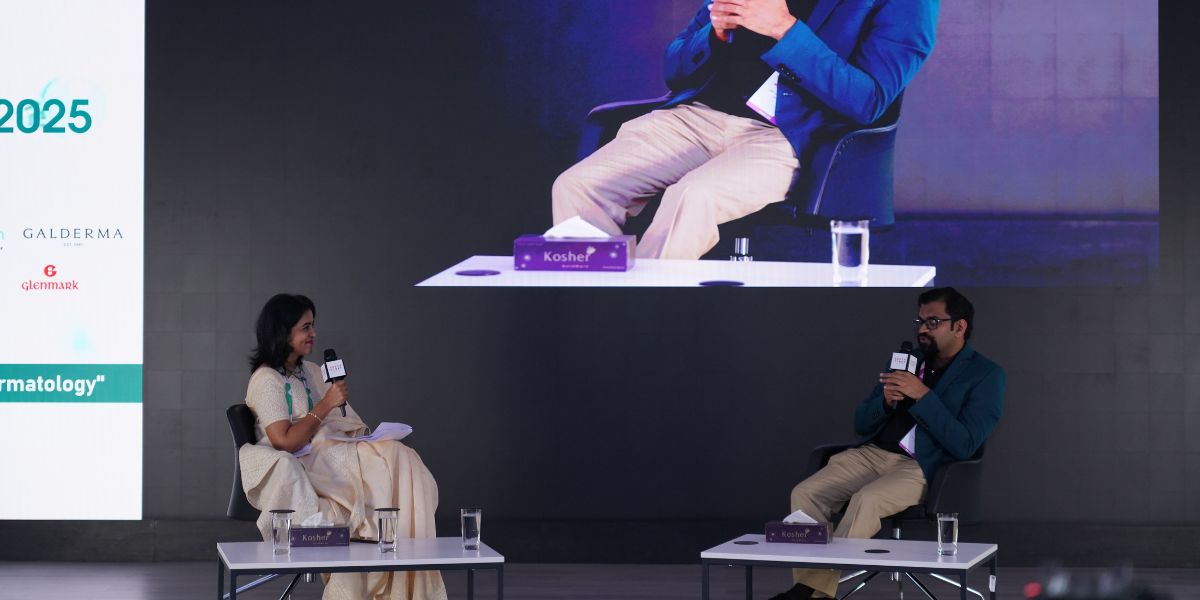According to the experts, the first step in treating adolescent or early-onset hair loss is a thorough diagnostic work-up.
Published Nov 14, 2025 | 7:00 AM ⚊ Updated Nov 14, 2025 | 7:00 AM

Dr Kavish Chouhan and Dr Madhavi Reddy discussed treatments for hair loss.
Synopsis: Dermatologists warn that most of the quick fixes for hair loss do little — and in some cases, make things worse. According to the experts, the first step in treating adolescent or early-onset hair loss is a thorough diagnostic work-up.
For millions of young Indians panicking over hair loss, oils, serums, and social media hacks have become first-line “treatments”. However, dermatologists warn that most of these quick fixes do little — and in some cases, make things worse.
At the Dakshin Health Summit 2025, organised by South First at the Asian Institute of Gastroenterology in Hyderabad on Sunday, 9 November, during a fireside chat on Tackling Early-Onset Hair Loss, dermatologists Dr Kavish Chouhan and Dr Madhavi Reddy explained that managing hair loss, especially among teenagers, needs a scientific and long-term approach, not cosmetic experiments.
“Hair loss is a chronic condition, not a cosmetic one,” said Dr Chouhan. “It has to be treated like diabetes or hypertension — with proper medical guidance and patience.”
According to the experts, the first step in treating adolescent or early-onset hair loss is a thorough diagnostic work-up. “Before we start any treatment, we do nutritional and hormonal analysis,” said Dr Reddy. “Most teenagers have vitamin D, B12, or iron deficiencies. In girls, we often find thyroid or PCOS-related issues.”
Doctors caution that simply taking hair vitamins or using over-the-counter lotions without understanding the cause can delay proper treatment.
“Hair fall is often a symptom of something deeper,” Dr Reddy said. “You can’t fix it with oils alone.”
The most widely used and clinically proven treatment for hair loss is minoxidil, a topical solution that improves blood flow to the scalp and stimulates follicles. However, misuse is rampant, with many starting and stopping it abruptly or mixing it with herbal or cosmetic products.
“Topical minoxidil is still the first-line treatment,” explained Dr Chouhan. “In some adults, we also use low-dose oral minoxidil for better compliance and results, but for teenagers, topical is safer.”
He warned against unsupervised use of oral tablets or compounded minoxidil sold online. “Teenagers are buying oral minoxidil from websites; that’s dangerous. This drug needs medical supervision,” he said.
Despite marketing claims, dermatologists say no oil can regrow hair if the underlying cause is hormonal or genetic.
“Oils can condition the hair, but they can’t reverse androgenetic alopecia,” said Dr Reddy. “We tell patients — apply minoxidil, not miracle oils,”
Dr Chouhan added that patients should stick to a single prescribed treatment plan instead of mixing products. “If you combine my prescription with random desi or salon treatments, I can’t help you,” he said. “Consistency is key,” he also stressed that he refuses to continue treatment to those who choose to follow such treatment methods.
Doctors said many people often stop treatment too soon, expecting instant results. “Many come back after two weeks saying nothing’s changed,” said Dr Chouhan. “Hair takes three to four months to show regrowth, and six months for visible thickening.”
Counselling, therefore, is as important as medication. “We tell patients: The longer you want to protect your hair, the longer you’ll need treatment,” said Dr Reddy. “It’s about control, not a one-time cure.”
For most early-stage cases, dermatologists recommend:
In advanced cases or poor responders, oral minoxidil or regenerative therapies such as PRP or exosomes may be added, but only under expert supervision.
“Each patient is different,” said Dr Chouhan. “We’re now entering the era of personalised trichology, but the basics remain the same: Diagnose, treat early, and stay consistent,” Meanwhile, “Hair loss treatment isn’t a sprint,” said Dr Reddy. “It’s a marathon guided by science, not superstition.”
(Edited by Muhammed Fazil.)
